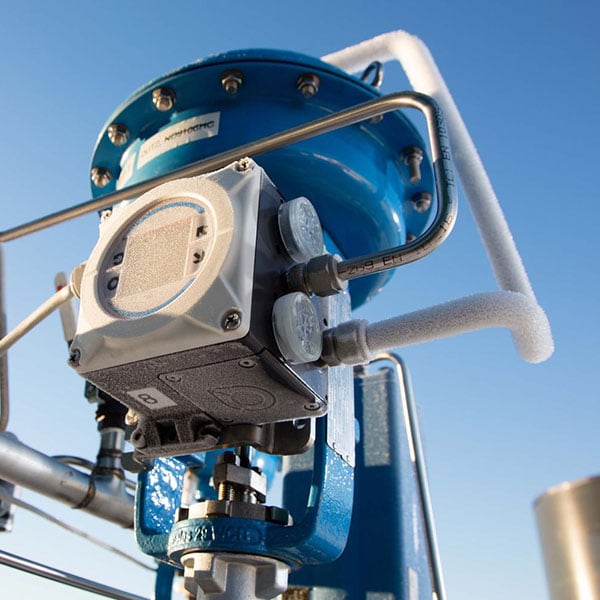Enhancing Functional Performance with Advanced Control Valves

Maximize Power Savings and Comfort With Advanced Structure Automation Controls
In the realm of contemporary design and facility monitoring, the integration of innovative structure automation controls stands as a crucial improvement. By harnessing the power of automation, buildings can adjust, react, and develop in methods that were as soon as inconceivable.
Power Efficiency Perks
Power performance benefits can dramatically reduce power intake and operational costs in structures. Energy-efficient systems, such as innovative structure automation controls, can maximize the usage of sources like lights, air conditioning, and heating, leading to lower energy expenditures over time.
Moreover, boosted power effectiveness can prolong the life-span of structure equipment and systems. By operating more successfully, HVAC systems, light, and various other building parts experience less damage, leading to decreased upkeep and replacement prices. Furthermore, energy-efficient buildings frequently regulate higher building worths and rental rates, giving long-lasting economic benefits to proprietors.
Additionally, power efficiency can boost passenger comfort and efficiency. Effectively controlled indoor environments with optimum lights and thermal conditions develop a more favorable and positive office, leading to improved worker complete satisfaction and performance. Overall, the energy effectiveness advantages associated with sophisticated structure automation controls are complex, including price financial savings, ecological stewardship, and passenger health.
Boosted Convenience Control
Enhancing comfort control in structure environments requires an advanced combination of innovative automation systems for ideal passenger wellness. By using sophisticated building automation controls, facilities can tailor the indoor environment to fulfill the specific demands and choices of occupants. These systems make it possible for specific law of lighting, temperature level, and ventilation, creating a productive and comfy ambience. Resident contentment and performance are very closely linked to thermal comfort, making it important to have systems in position that can adjust to transforming problems in real-time.
By integrating these advanced controls, structures can not just boost convenience but also enhance energy performance by optimizing system procedures based on actual occupancy and usage patterns. Eventually, focusing on occupant comfort through advanced automation systems leads to an extra enjoyable and healthier indoor environment.
Operational Efficiency Improvements

Moreover, the execution of real-time tracking and analytics tools makes it possible for building operators to identify power ineffectiveness and functional abnormalities promptly. By continuously keeping track of power usage patterns and system efficiency metrics, adjustments can be made in real-time to optimize energy consumption and make sure peak operational effectiveness. control valves. Furthermore, including demand feedback techniques right into building automation controls can additionally enhance functional performance by dynamically changing energy usage based upon grid conditions and prices signals
Indoor Environment Optimization
Effective interior environment optimization is a fundamental element of structure automation controls, making certain occupants' convenience and health while taking full advantage of power savings. By making use of innovative sensors and controls, developing automation systems can continuously readjust and monitor temperature level, moisture levels, air top quality, and ventilation to produce an optimal indoor atmosphere. Preserving constant and comfy problems not just enhances passenger complete satisfaction however likewise improves efficiency and general health.
Interior environment optimization likewise plays a crucial role in energy efficiency. By fine-tuning air conditioning, air flow, and heating systems based on real-time information and tenancy patterns, constructing automation controls can significantly lower power usage - control valves. Carrying out methods such as demand-controlled her response ventilation and thermal zoning can help decrease energy waste while ensuring that each location of the structure obtains the needed conditioning.

Sustainable Setting Development
Building automation regulates not only maximize interior environment conditions for power effectiveness and owner comfort however likewise lay the foundation for producing a lasting setting through critical management of sources and systems. By incorporating sophisticated structure automation innovations, such as sensing units, actuators, and intelligent software program, facilities can readjust and monitor power usage in real-time to reduce waste and decrease their carbon impact. These systems make it possible for predictive maintenance, determining possible issues before they rise and optimizing devices efficiency to boost durability and performance.
Furthermore, lasting setting helpful hints production extends beyond power monitoring to encompass water preservation, waste decrease, and interior air quality improvement. Building automation controls can control water usage, identify leaks, and make certain proper waste disposal practices, contributing to general sustainability efforts. Furthermore, by keeping an eye on and managing air flow and filtering systems, these modern technologies enhance resident health and wellness and efficiency check that while reducing energy consumption related to a/c procedures.
Final Thought
In final thought, advanced structure automation regulates deal considerable benefits in terms of power financial savings, convenience control, functional efficiency, indoor environment optimization, and producing a sustainable setting. By executing these controls, buildings can accomplish optimum performance while decreasing energy intake and boosting passenger comfort. It appears that making use of innovative automation innovation is important in improving building efficiency and creating an extra lasting future.
Power performance benefits can significantly lower energy consumption and functional expenses in structures. Generally, the energy performance benefits linked with advanced structure automation controls are multifaceted, incorporating cost financial savings, environmental stewardship, and occupant wellness.
In addition, including need response approaches into building automation controls can even more improve operational effectiveness by dynamically changing power use based on grid problems and prices signals.
Structure automation regulates not just optimize interior environment problems for power efficiency and occupant comfort yet also lay the structure for developing a lasting setting with critical monitoring of sources and systems.In final thought, advanced building automation controls deal substantial advantages in terms of power cost savings, comfort control, functional effectiveness, interior climate optimization, and creating a sustainable setting.